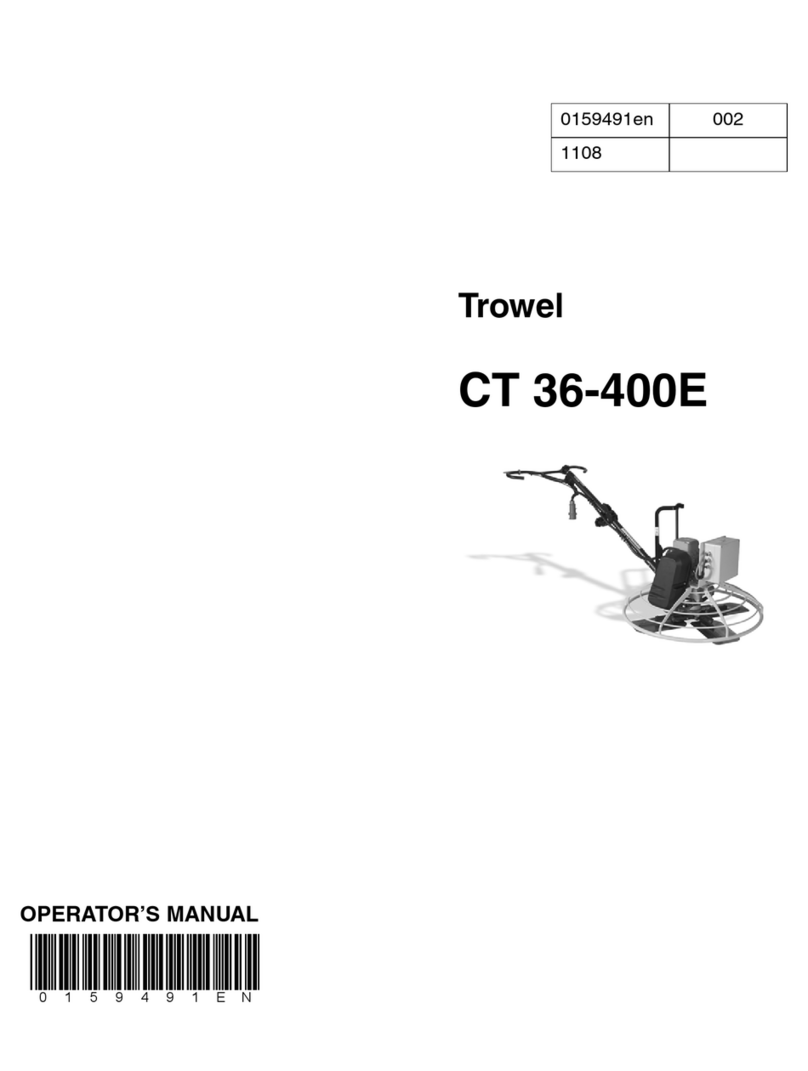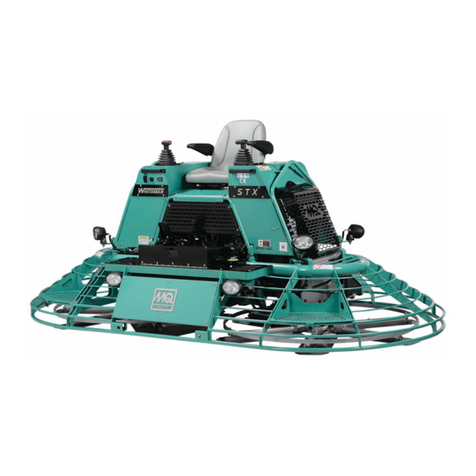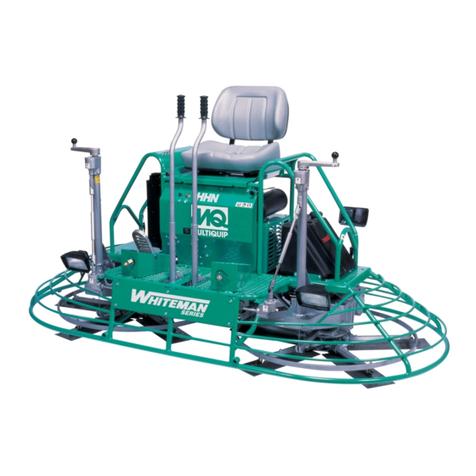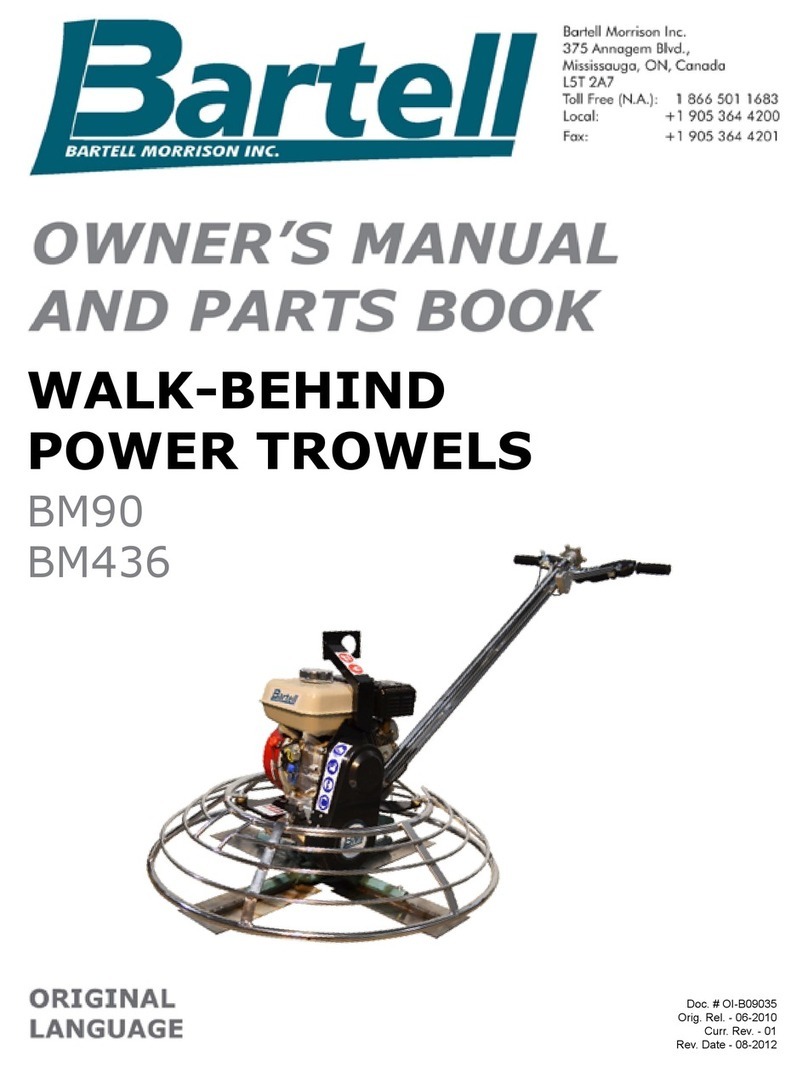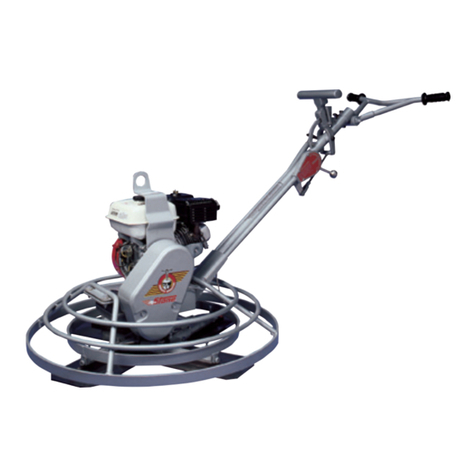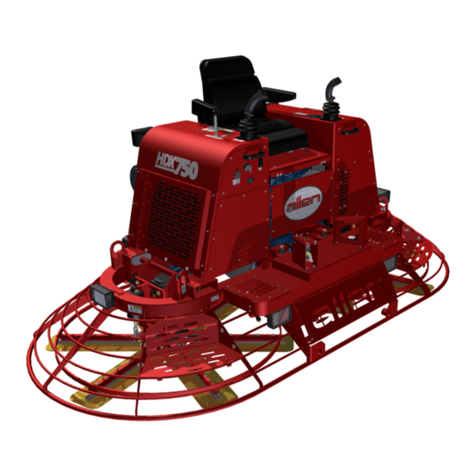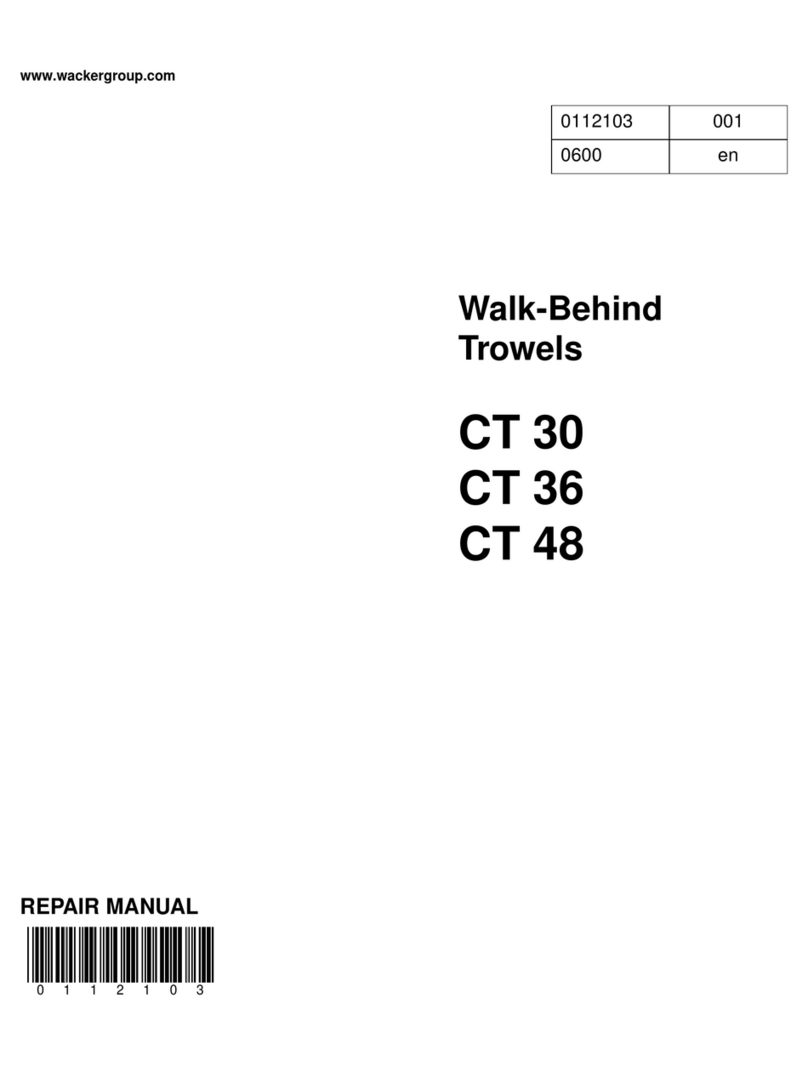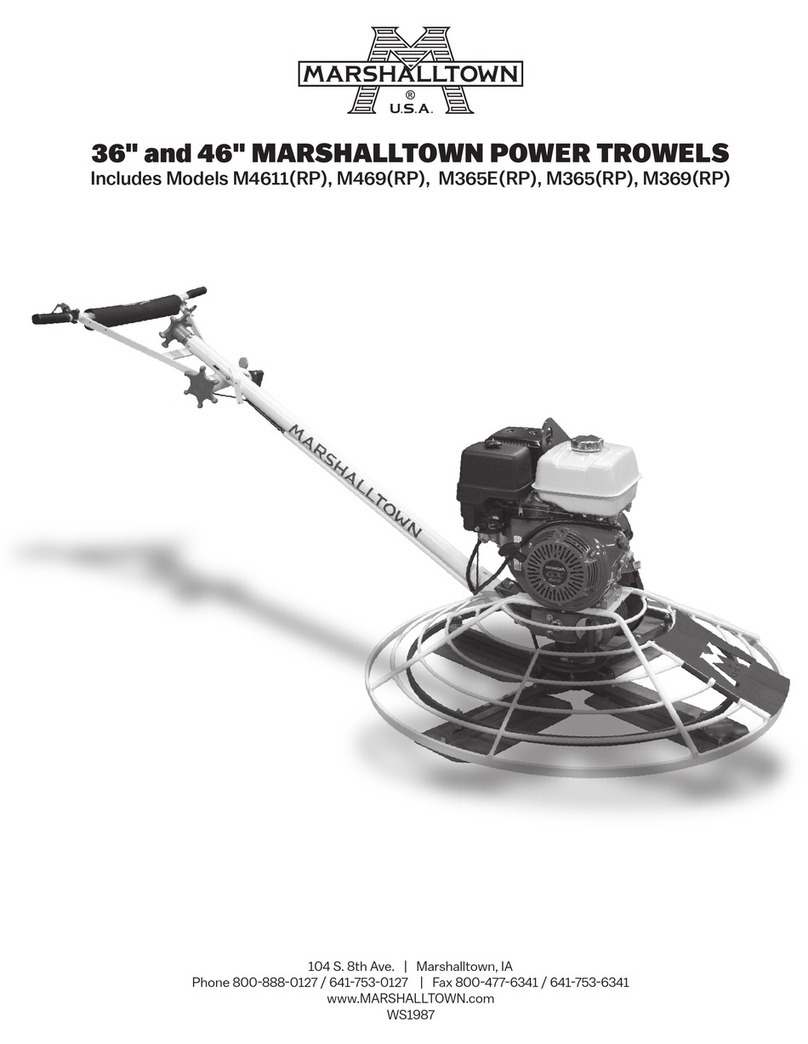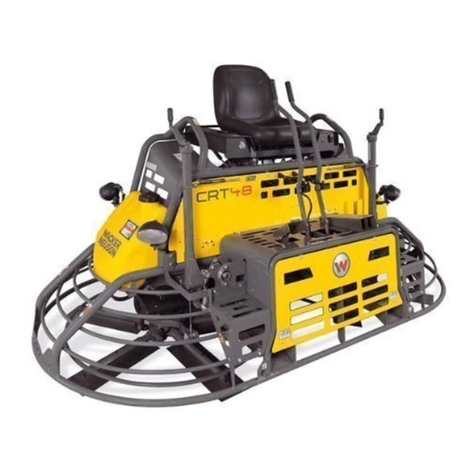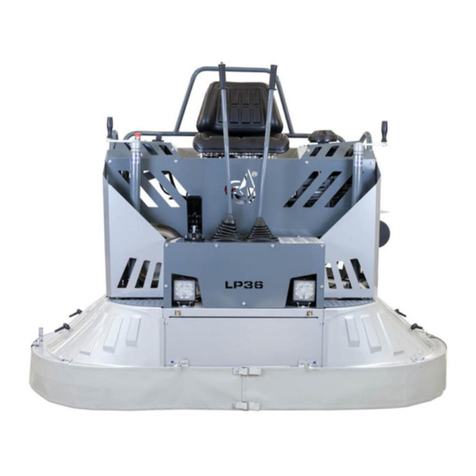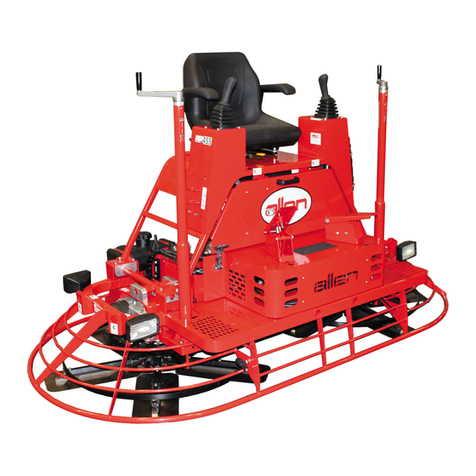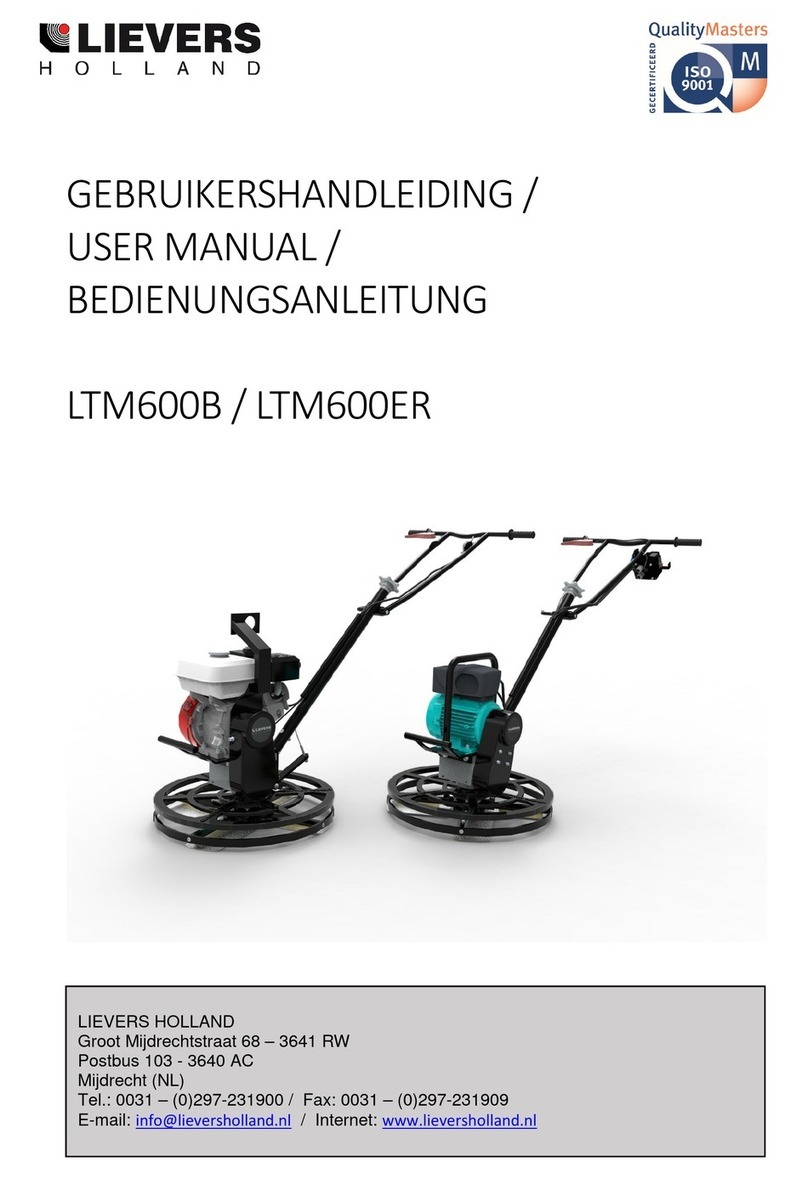
TABLE OF CONTENTS 2
Contents ……………………………………………...…1
Forward …………………………………………...…… 2
Feature…………………………….......................………2
Specication ………………………….................………2
Safety precautions …………………………………...… 3
Maintenance record ……… ……………………....……4
Maintenance schedule…………................................……5
Operation elements………................................…………7
Operation (oating)…………………..........................…8
Operation (nishing)…………………………............…8
Starting & stopping procedure…………………………9
1. Before operation checks…………………………...…9
2. Starting engine procedure……………………………9
3. Stopping engine procedure……………………….…11
4. Setting engine speed………………………...………12
Lubrication………………………………………….…12
1. Engine oil lever check………………………………12
2. Engine oil change……………………………………13
Spark plugs…………………………………………….13
Carburetor adjustment……………………………..…14
Air lter service………………………………………..15
Storage…………………………………………………16
Troubleshooting…………………………………….…16
Diagram…………………………..……………………19
FOREWARD
• For your own safety and protection from bodily injuries,
carefully read, understand and follow the safety instructions
in this manual.
• Please operate and maintain your machine in accordance
with the instructions in this manual.
• Defective machine parts are to be replaced as soon as
possible.
• Keep this owner's manual handy, so you can refer to it at
any time.
• No part of this publication may be reproduced without
written permission.
• We expressly reserve the right to technical modications-
even without express due notice - which aim at improving
our machines or their safety standards.
FEATURE
QJM1000 Walk-behind Power Trowel can be used in surface
nishing of concrete road, terrace, boatyard, airport and oor
etc.
Deadman switch design provide safe. A sophisticated system to
protect the operator from an out-of-control spinning handle.
When the operator is using a walk-behind power trowel and
let go of the safety sensor detects the motion of the handle and
stops the engine before the handle reaches a 45-degree rotation.
e handle can be adjusted due to the stature of operator, and it
oers maximum control and comfort for the operation. e alloy
blades which have get heat treatment are worn well. Low center
of gravity provides workers with safe and stable operation.
SPECIFICATION
KPT 36
Weight: 83kg
Diameter: 980mm
Float pan diameter: 945mm
Trowel blade rev: 70r/min~140r/min
Overall diameter: 1820×945×980mm
Blades: 4
Gearbox oil: WA460
Gearbox oil capacity: 950ml
Power output: 5.5hp
Engine type: HONDA GX160
Fuel capacity (L): 3.6
Engine oil type: Recommended
SAE10W-30
Engine oil capacity (L): 0.6
KPT 48
Weight: 119kg
Diameter: 1175mm
Float pan diameter: 1180mm
Trowel blade rev: 70r/min~140r/min
Overall diameter: 2080×1170×1020mm
Blades: 4
Gearbox oil: WA460
Gearbox oil capacity: 950ml
Power output: 9/13hp
Engine type: HONDA GX270/390
Fuel capacity (L): 6/6.5
Engine oil type: Recommended
SAE10W-30
Engine oil capacity (L): 1.1
